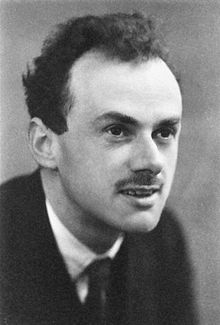Paul Dirac (Paul Adrien Maurice Dirac)

Paul Dirac was educated first at Bishop Road Primary School and then at the all-boys Merchant Venturers’ Technical College (later Cotham School), where his father was a French teacher. The school was an institution attached to the University of Bristol, which shared grounds and staff. It emphasised technical subjects like bricklaying, shoemaking and metal work, and modern languages. This was unusual at a time when secondary education in Britain was still dedicated largely to the classics, and something for which Dirac would later express his gratitude. Paul Dirac studied electrical engineering on a City of Bristol University Scholarship at the University of Bristol’s engineering faculty, which was co-located with the Merchant Venturers’ Technical College. Shortly before he completed his degree in 1921, he sat the entrance examination for St John’s College, Cambridge. He passed, and was awarded a £70 scholarship, but this fell short of the amount of money required to live and study at Cambridge. Despite his having graduated with a first class honours Bachelor of Science degree in engineering, the economic climate of the post-war depression was such that he was unable to find work as an engineer. Instead he took up an offer to study for a Bachelor of Arts degree in mathematics at the University of Bristol free of charge. He was permitted to skip the first year of the course owing to his engineering degree. In 1923, Dirac graduated, once again with first class honours, and received a £140 scholarship from the Department of Scientific and Industrial Research. Along with his £70 scholarship from St John’s College, this was enough to live at Cambridge. There, Dirac pursued his interests in the theory of general relativity, an interest he had gained earlier as a student in Bristol, and in the nascent field of quantum physics, under the supervision of Ralph Fowler. From 1925 to 1928 he held an 1851 Research Fellowship from the Royal Commission for the Exhibition of 1851. He completed his PhD in June 1926 with the first thesis on quantum mechanics to be submitted anywhere. He then continued his research in Copenhagen and Göttingen.
Paul Dirac shared the 1933 Nobel Prize for physics with Erwin Schrödinger “for the discovery of new productive forms of atomic theory”. Dirac was also awarded the Royal Medal in 1939 and both the Copley Medal and the Max Planck Medal in 1952. He was elected a Fellow of the Royal Society in 1930, an Honorary Fellow of the American Physical Society in 1948, and an Honorary Fellow of the Institute of Physics, London in 1971. He received the inaugural J. Robert Oppenheimer Memorial Prize in 1969. Dirac became a member of the Order of Merit in 1973, having previously turned down a knighthood as he did not want to be addressed by his first name. In 1984, Paul Dirac died in Tallahassee, Florida, and was buried at Tallahassee’s Roselawn Cemetery.
Born
- August, 08, 1902
- United Kingdom
- Bristol, England
Died
- October, 20, 1984
- USA
- Tallahassee, Florida
Cemetery
- Roselawn Cemetery
- Tallahassee, Florida
- USA

